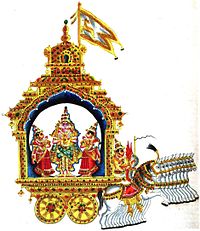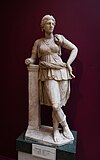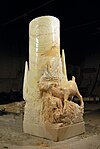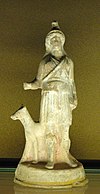In Kapampangan mythology, Mayari is the goddess of the moon and ruler of the world during nighttime.

In the indigenous religion of the ancient Tagalogs, Bathalà/Maykapál was the transcendent Supreme God, the originator and ruler of the universe. He is commonly known and referred to in the modern era as Bathalà, a term or title which, in earlier times, also applied to lesser beings such as personal tutelary spirits, omen birds, comets, and other heavenly bodies which the early Tagalog people believed predicted events. It was after the arrival of the Spanish missionaries in the Philippines in the 16th century that Bathalà /Maykapál came to be identified with the Christian God, hence its synonymy with Diyós. Over the course of the 19th century, the term Bathala was totally replaced by Panginoón (Lord) and Diyós (God). It was no longer used until it was popularized again by Filipinos who learned from chronicles that the Tagalogs' indigenous God was called Bathalà.

Philippine mythology is rooted in the many indigenous Philippine folk religions. Philippine mythology exhibits influence from Hindu, Muslim, Buddhist, and Christian traditions.
Tala, based on Hindu goddess Tara, is the name of the goddess of the morning and evening star in Tagalog mythology. Her origins are varied depending on the region. Golden Tara, the Majapahit-era gold statue of Hindu deity Tara or Tagalog adoption Tala was found in 1918 in Agusan. The legend of Tala has very close parallels to legends among non-Filipino cultures such as the India tribes of Bihar, Savara and Bhuiya, as well as the Indianized Semang.
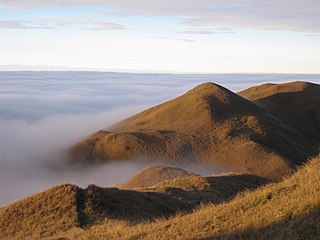
Indigenous Philippine folk religions are the distinct native religions of various ethnic groups in the Philippines, where most follow belief systems in line with animism. Generally, these Indigenous folk religions are referred to as Anito or Anitism or the more modern and less ethnocentric Dayawism, where a set of local worship traditions are devoted to the anito or diwata, terms which translate to gods, spirits, and ancestors. 0.23% of the population of the Philippines are affiliated with the Indigenous Philippine folk religions according to the 2020 national census, an increase from the previous 0.19% from the 2010 census.
The Pangasinan people, also known as Pangasinense, are an ethnolinguistic group native to the Philippines. Numbering 1,823,865 in 2010, they are the tenth largest ethnolinguistic group in the country. They live mainly in their native province of Pangasinan and the adjacent provinces of La Union and Tarlac, as well as Benguet, Nueva Ecija, Zambales, and Nueva Vizcaya. Smaller groups are found elsewhere in the Philippines and worldwide in the Filipino diaspora.

The Bakunawa is a serpent-like dragon in Philippine mythology. It is believed to be the cause of eclipses, earthquakes, rains, and wind. The movements of the Bakunawa served as a geomantic calendar system for ancient Filipinos and were part of the rituals of the babaylan priestess. It is usually depicted with a characteristic looped tail and a single horn on the nose. It was generally believed to be a sea serpent, but is also variously believed to inhabit either the sky or the underworld.

A weather god or goddess, also frequently known as a storm god or goddess, is a deity in mythology associated with weather phenomena such as thunder, snow, lightning, rain, wind, storms, tornadoes, and hurricanes. Should they only be in charge of one feature of a storm, they will be called after that attribute, such as a rain god or a lightning/thunder god. This singular attribute might then be emphasized more than the generic, all-encompassing term "storm god", though with thunder/lightning gods, the two terms seem interchangeable. They feature commonly in polytheistic religions, especially in Proto-Indo-European ones.

Indigenous Philippine shrines and sacred grounds are places regarded as holy within the indigenous Philippine folk religions. These places usually serve as grounds for communication with the spirit world, especially to the deities and ancestral spirits. In some cases, they also function as safeguards for the caskets of ancestors, as well as statues or other objects depicting divine entities.
Religions in pre-colonial Philippines included a variety of faiths, of which the dominant faiths were polytheist indigenous religions practiced by the more than one hundred distinct ethnic groups in the archipelago. Buddhism, Hinduism, and Islam were also present in some parts of the islands. Many of the traditions and belief systems from pre-colonial Filipino religions continue to be practiced today through the Indigenous Philippine folk religions, Folk Catholicism, Folk Hinduism, among others.
A dawn god or goddess is a deity in a polytheistic religious tradition who is in some sense associated with the dawn. These deities show some relation with the morning, the beginning of the day, and, in some cases, become syncretized with similar solar deities.

The indigenous religious beliefs of the Tagalog people were well documented by Spanish missionaries, mostly in the form of epistolary accounts (relaciones) and entries in various dictionaries compiled by missionary friars.

